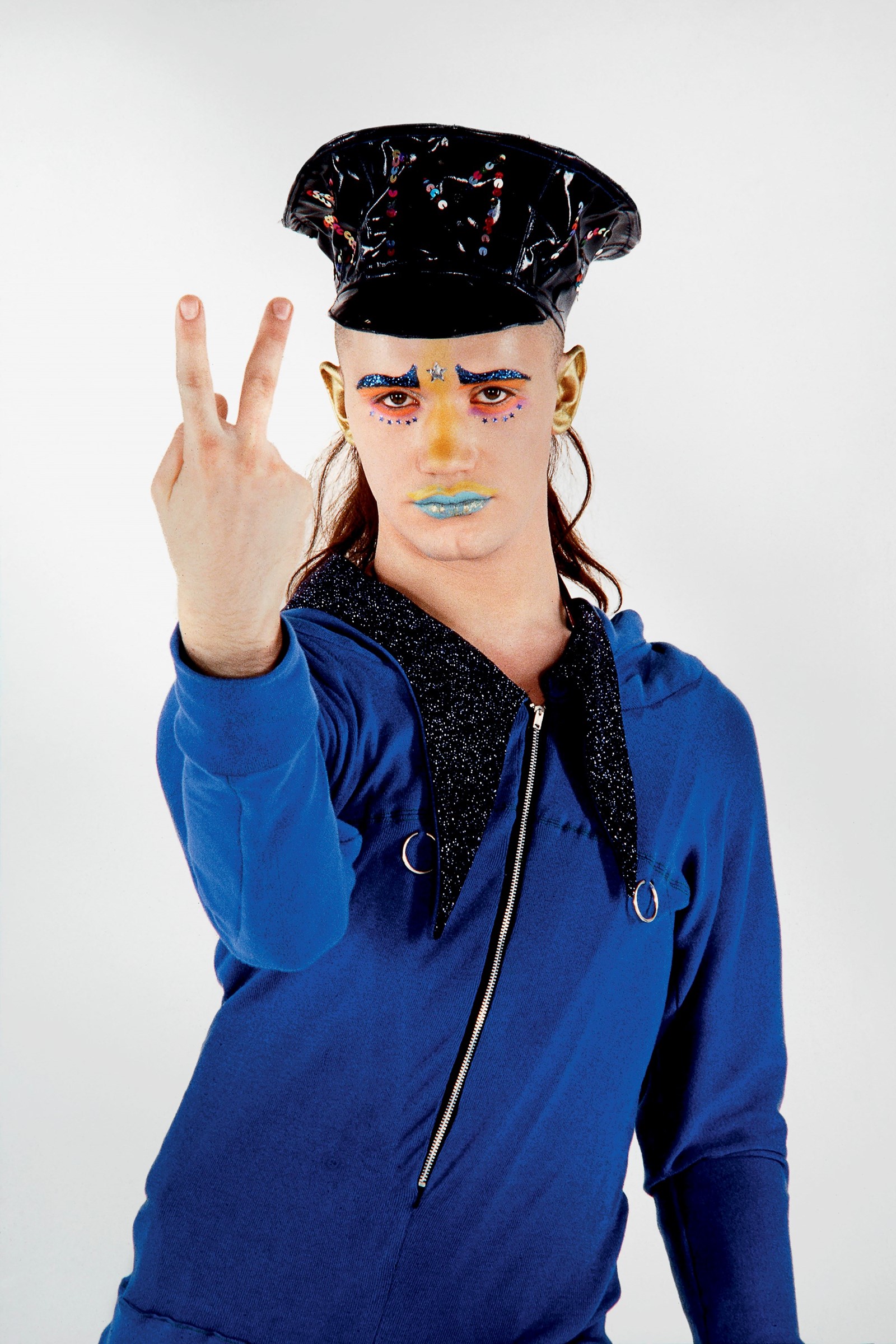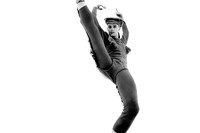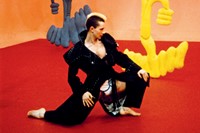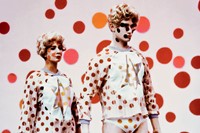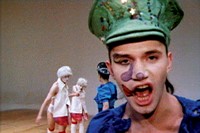This article is part of an ongoing series on Michael Clark, tied to the Barbican’s major exhibition of the radical dancer and choreographer: Michael Clark: Cosmic Dancer.
With the conviction that actions speak louder than words, Michael Clark has transformed the face of the contemporary dance world since launching his own company in 1984.
“Rock is my rock. It has been vital to me at a personal level; it has shaped me as an individual as well as an artist,” says Clark. His collaborations with individualistic musicians like Wire, Laibach, The Fall, Jarvis Cocker and Scritti Politti, as well as boundary-breaking fashion designers and visual artists including BodyMap, Leigh Bowery, Trojan, Sarah Lucas, Charles Atlas, Wolfgang Tillmans, and Peter Doig have marked him as “British dance’s true iconoclast”.
“Michael's choreography was like nothing I had ever seen – the movement and musicality, the props and costumes, it was so edgy, brave, creative, sexy, and fluid – at a time when fluidity wasn’t fluid. It just set you alight,” says musician Brix Smith Start, who fondly recalls the joys of Clark’s friendship and collaboration. “Michael was part of a very fabulous London scene. We hung out, partied hard, and lived the most decadent, debauched, and penniless life. We were all just scraping around but we were rich in everything, it didn’t matter about money. Our friendship shaped me as a person today.”
In conjunction with Michael Clark: Cosmic Dancer, a new Barbican exhibition and Prestel catalogue, we speak with four of Clark’s many collaborators over the years for an insight into the enfant terrible of contemporary dance.
Brix Smith Start
Best known as the lead guitarist and a major songwriter for the English post-punk band The Fall, American musician and fashion entrepreneur Brix Smith Start is currently the lead vocalist and guitarist with Brix & the Extricated, along with brothers Steve and Paul Hanley.
“It was 1983 or 84 and I had just moved to Manchester to join The Fall. I was living with Mark E Smith in a run down flat and we were watching a TV show called The Tube. They had a piece on a punk rock ballerina who had defected from the Royal Ballet. I saw this beautiful creature with a white mohican and a pink tutu – gorgeous, sexy, ethereal – dancing through the aisle of the supermarket. I remember thinking, ‘That is so cool.’
“A few weeks later, we got a call from Michael or one of his managers saying how much he loved The Fall, that he had choreographed pieces to our music, and could we meet? Instantly on meeting him I absolutely adored him. He had this incredible frisson of energy and creativity surrounding him like a dissipating cloud. The closer you got to him – it infused your body and set you alight. You just felt more alive around Michael.
“The main thing we are known for is the 1988 ballet, I Am Curious, Orange. He said, ‘We want to create a ballet from scratch. We’d love you to write the music and play live on stage every night,’ and we were like, ‘Fuck yeah!’ I remember seeing the props for the first time and my mind just blew. They said, ‘Brix, you’re going to sit on this giant Big Mac.’ It was the size of a car! I had to play my guitar on it. My nickname during the run was ‘Burger Queen.’”

Sadie Coles
Sadie Coles is a British art dealer who owns and directs Sadie Coles HQ, London, which represents Matthew Barney, Urs Fischer, Elizabeth Peyton, and Sarah Lucas, among others. Coles served on the board of Michael Clark Company for over a decade and in 2006 and 2014 organised fundraising auctions at Christie’s in support of the Company.
“Michael is the most beautiful man you’ve ever seen. He is naughty and super fun, and connects to all sorts of interesting people – musicians, artists, dancers, filmmakers who have formed a tight-knit creative community. He’s unusual in that he resists the categorisation and the limits that the contemporary dance world provides. He was absolutely thrilled when the company was invited to perform at Glastonbury; he likes to step outside of the proscenium arch all the time.
“For the opening of Sarah Lucas’ exhibition at the Kunstverein in Hamburg, he performed in the gallery around her very rude, very physical, very sexual sculptures. That’s a subject matter they’ve both shared – to the extent that Sarah designed the sets and props for one of his performances at the Barbican. Sarah has two rooms, one of which includes a concrete cast of Michael’s body sitting on the toilet. I remember that collaboration very well. That was around the time that Michael was helping her make sculptures and I think she couldn’t resist casting him as well.
“I love his sense of rebellion and find it very inspiring to question everything, to bend the rules, to transgress as much as you can. We need artists to show us different ways of thinking and imagining. Michael is a magician; he does all of that.”
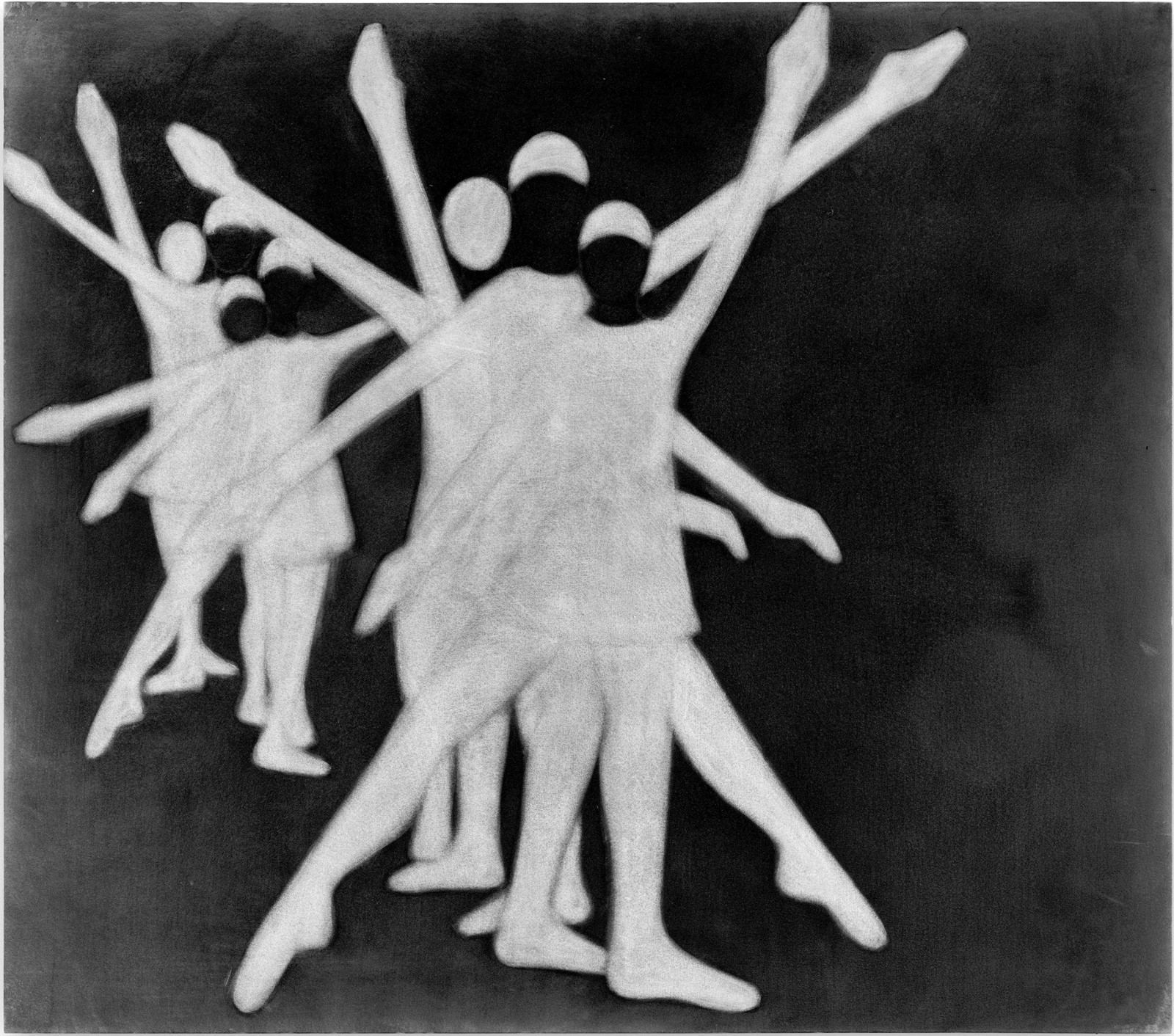
Silke Otto Knapp
Originally from Germany, Silke Otto-Knapp is a painter who has lived and worked in London, Vienna, and now Los Angeles. She has exhibited at the Berkeley Art Museum/Pacific Film Archive; Greengrassi, London; Gavin Brown’s Enterprise, New York; and Tate Britain, London.
“Michael and I had mutual friends when I first moved to London in the 90s, and were in each other’s orbits. I went to see current/SEE at the Roundhouse and had never experienced anything like it before. There was something about the physicality: the movement in relationship to the music – it doesn’t completely surrender to the music, it resists it as well. You have this incredible physical experience as a viewer but at the same time there is an analytical distance. His work felt relevant to my life and what I was thinking about in my own work – questions I had for myself as an artist, which I had never seen in that way before.
“I think his work has evolved; there are motifs and continuity but there is a rigorous disciplined form that has its own language in relationship to the reality of the world we live in. I don’t think there is anything backwards-looking, romanticising or sentimental about the work – it’s about creating an experience that has intensity in the moment but at the same time the space to reflect on it. That’s important for a work of art – not to be subsumed by the moment in time but to be open to it and addressing it. He’s such a unique voice.”
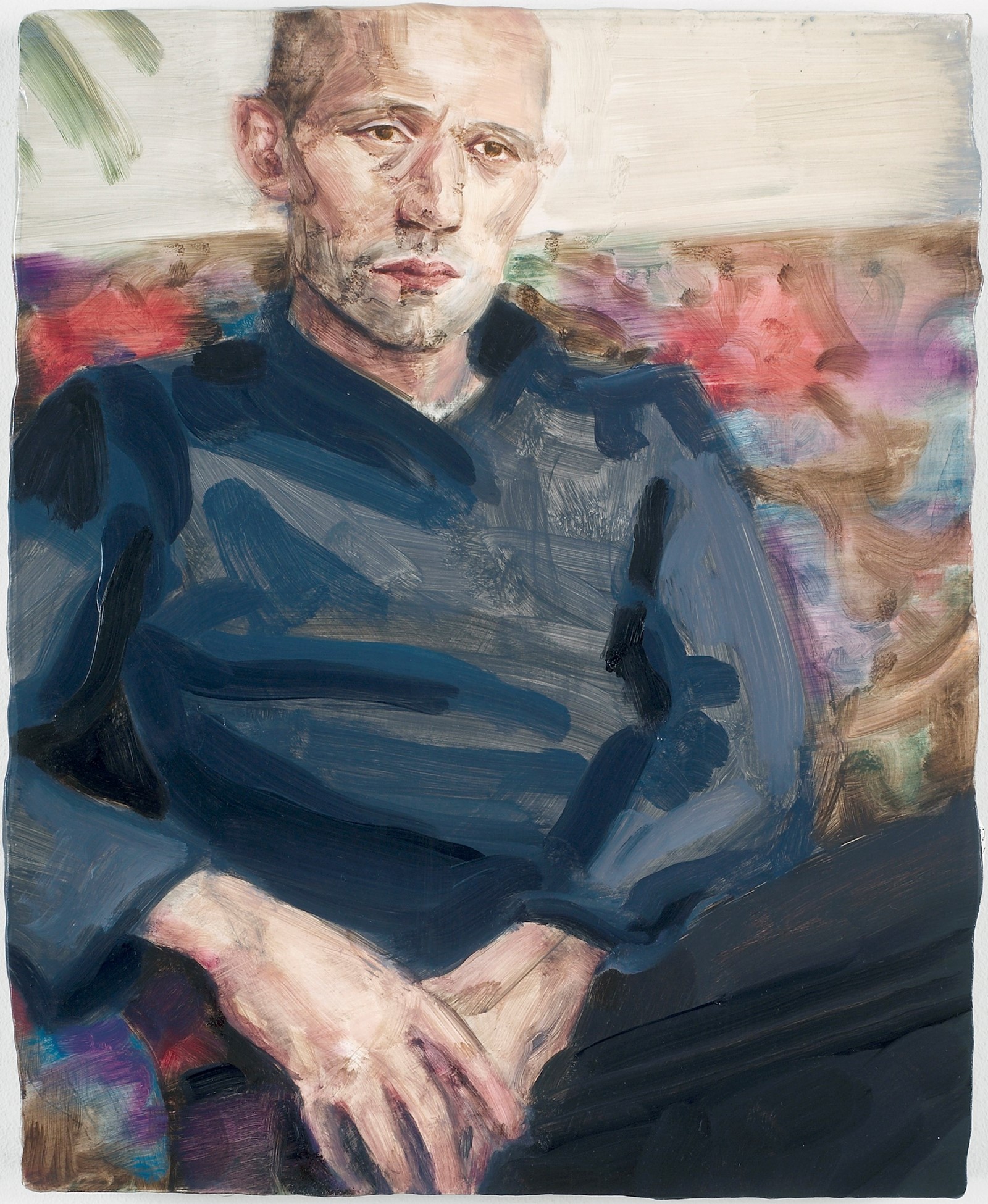
Elizabeth Peyton
Elizabeth Peyton is an artist based in New York and Berlin who works primarily in painting, drawing and printmaking. Peyton has painted several portraits of Michael Clark since 2005. Her work is held in the permanent collections of the Museum of Modern Art, New York; Whitney Museum of American Art, New York; and San Francisco Museum of Modern Art, among others.
“I met Michael somewhere in the 90s. I got to know him more as I was getting to know his work. His work was electrifying – total sensory everything. I love that he can make punk classic and the classical, punk. There is a collapse of time: while everything feels so contemporary, it’s rooted in early modern culture.
“In the early 2000s he sat for me a number of times in New York City. When in London, I’d see him – sometimes going to rehearsals, always going to the Barbican. Michael has an interior imagination made of steel – but ever flowing – he makes connections between things that to others may seem disparate but to him come together heightened, raised, given new beauty.”
“Michael has inspired me in what is possible – how to create – from a desire in the mind to a huge complex performance. He has brilliant ideas that he turns into huge experiences. Watching him work with his dancers expanding certain pieces over a length of time is inspiring. Once Michael made a dance for the opening of my show at The Whitechapel. With colour and movement he made a response to the pictures. It’s something I will never forget.”
Michael Clark: Cosmic Dancer is on view at the Barbican, London, until January 3, 2021. The accompanying catalogue is published by Prestel.
